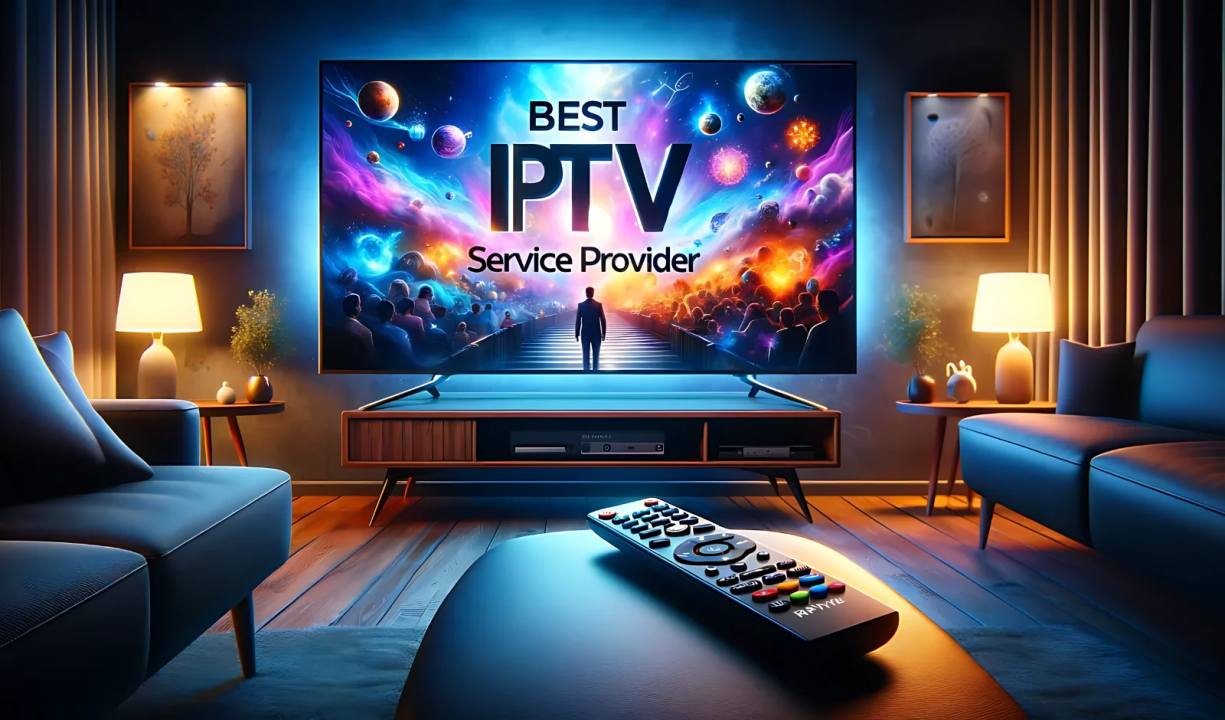Entertainment
Reduce Video Game Lag: Level Up Your Gaming Performance

Introduction
Gaming is an immersive experience, transporting players to virtual worlds where they can become heroes, explorers, or champions. However, there’s nothing more frustrating than trying to conquer a game only to be hindered by video game lag. Lag can be the arch-nemesis of every gamer, causing delays, stuttering, and ruining the overall experience. But fear not! In this article, we will explore effective ways to reduce video game lag and enhance your gaming performance.
Understanding Video Game Lag
Video game lag is the delay between an action taken by the player and the game’s response. It disrupts the flow of gameplay and can lead to missed opportunities or, worse, defeat. Lag can result from various factors, including hardware limitations, network issues, or software glitches. Addressing lag is crucial for an enjoyable and smooth gaming experience.
Hardware Optimization for Lag Reduction
The first step in reducing video game lag is to ensure your gaming hardware is up to the task. Investing in a powerful gaming PC or console can make a significant difference. Upgrading your Graphics Processing Unit (GPU), Central Processing Unit (CPU), and Random Access Memory (RAM) can lead to smoother performance and reduce lag. Additionally, optimizing graphics settings can alleviate the strain on your system, providing a more seamless gaming experience.

Photo by Alexandre Debiève on Unsplash
Network Improvements for Lag-Free Gaming
In online gaming, a stable and high-speed internet connection is essential. High ping and latency can lead to frustrating lag, affecting your gameplay and competitiveness. To minimize lag, consider using a wired connection instead of Wi-Fi, as it offers lower latency and higher reliability. If you’re experiencing lag in multiplayer games, try forwarding the necessary ports on your router to improve connectivity. You can also set up Quality of Service (QoS) settings to prioritize gaming traffic over other devices on your network.
Software Tweaks and Settings
Keeping your drivers and game software up to date is crucial for optimal performance. Game developers often release updates to address performance issues, including lag. Enabling game mode on your PC or console can help allocate system resources more efficiently, resulting in reduced lag. Additionally, disabling unnecessary background processes can free up resources and ensure a smoother gaming experience.
Monitor System Temperature
Overheating can cause performance issues and contribute to video game lag. Ensure your gaming setup has proper ventilation, and consider using cooling pads or fans to keep your system at an optimal temperature. Regularly cleaning your PC or console from dust and debris can also prevent overheating and performance throttling.
Close Unnecessary Applications
Running multiple applications simultaneously can strain your system resources and lead to lag in games. Before starting a gaming session, close any unnecessary applications and background processes. This will free up valuable resources and allow your gaming rig to focus on delivering an uninterrupted experience.
Consider Gaming Optimized DNS
Sometimes, your Internet Service Provider’s (ISP) default DNS servers might cause lag. Switching to gaming-optimized DNS servers can reduce ping and latency, resulting in a smoother online gaming experience. Services like Google DNS or Cloudflare’s 1.1.1.1 can be great alternatives to your ISP’s default DNS.
Optimize In-Game Settings
Most modern games offer a wide range of graphics settings that can be tweaked to match your system’s capabilities. Lowering graphics settings can significantly improve frame rates and reduce lag. Experiment with different settings to find the right balance between visual quality and performance.
Keep Your System Updated
Regularly update your gaming system’s drivers, firmware, and operating system to ensure optimal performance. Graphics card drivers, in particular, often include performance enhancements and bug fixes that can reduce lag in specific games.
Upgrade Your Hardware

Image by Freepik
If you find that your system consistently struggles to run games smoothly even after optimization, it may be time for a hardware upgrade. Investing in a more powerful GPU, CPU, or additional RAM can provide a significant boost in performance and reduce lag in demanding games.
Conclusion
By following these effective ways to reduce video game lag, you can level up your gaming performance and enjoy a smoother, more enjoyable experience. From hardware optimization to network improvements and software tweaks, each step plays a crucial role in eliminating lag and enhancing your gaming adventures. Remember, a lag-free gaming experience not only improves your gameplay but also allows you to fully immerse yourself in the virtual worlds you explore. So, gear up, apply these tips, and get ready to conquer new challenges with zero lag holding you back!
Entertainment
Drift Hunters: The Quiet Art of Losing Control Gracefully

Introduction
Some driving games are built around competition. They push you to beat opponents, chase first place, or dominate leaderboards. Drift Hunters is not one of those games. Instead, it invites you into a quieter, more reflective world a place where drifting becomes an introspective practice, something closer to meditation than racing. There is no pressure, no aggressive AI, no frantic countdown. There is just you, your car, and the constant dance between grip and release.
What makes Drift Hunters so fascinating?
This is the way it slows you down mentally even as your car slides across the pavement. The moment the rear tires break loose, the world narrows into a single flow of motion. Everything unnecessary falls away: the noise in your head, the rush of your day, the clutter of responsibilities. You begin to feel the rhythm of the drift a subtle cycle of acceleration and correction, of commitment and uncertainty. In those moments, drifting becomes not just a mechanic but a breathing pattern.
Every map is designed to enhance this sense of calm focus. Open spaces let you experiment freely, without consequence. Long industrial stretches become extended thought corridors where you can settle into slow, deliberate drifts. Mountain roads challenge your concentration, forcing you to treat each corner like a fragile moment you must handle with care. The game never shouts at you. It gently shapes your awareness, guiding you toward a deeper understanding of how cars move and how your hands respond.
Drift Hunters feels more like adjusting
Then there’s the tuning. It may appear technical on the surface, but tuning in Drift Hunters feels more like adjusting a musical instrument than tweaking machinery. A small shift in suspension softness can transform a car from anxious to patient. A change in brake bias alters its emotional vocabulary. And as you experiment, you begin to craft a driving style that feels personal a reflection of your temperament. Are you bold, constantly pushing the rear end outward? Or cautious, preferring controlled slides and smooth transitions? The game doesn’t judge. It simply presents the tools and lets you discover yourself through trial and error.
Because of this, Drift Hunters becomes a space where improvement feels natural and unforced. You’re not grinding for rewards you’re refining your technique because the process itself is satisfying. The longer you play, the more you learn to appreciate the subtleties: the precise moment when weight transfers, the way a drift lengthens when throttle and steering find harmony, the strange sense of peace that comes from maintaining a long, uninterrupted slide. These experiences aren’t about spectacle; they’re about presence.
It gives you breathing room
And maybe that’s why Drift Hunters resonates with so many players. It doesn’t overwhelm you with features or gimmicks. It gives you breathing room a space to explore motion at your own pace, without judgment or noise. In a world where so many games demand constant attention and urgency, Drift Hunters offers something rare: the freedom to drift not because you must, but because it feels good to let go for a moment and trust the motion.
By the time you exit the game, you find that something has shifted. Your reflexes feel tuned, your thoughts feel clearer, and you’re left with a sense of quiet satisfaction. Drift Hunters doesn’t just teach you how to drift; it teaches you how to appreciate the fragile balance between control and surrender, both inside the game and in your own life.
What makes Drift Hunters feel different is how personal the journey becomes. Every car you tune starts to reflect you your habits, your struggles, your evolution. You might favor smooth, predictable setups with gentle suspension and balanced grip, or you might chase aggression with stiff springs, sharp angles, and turbo pressure cranked far beyond comfort. The tuning system doesn’t just give you options; it gives you identity. Your car becomes a mirror, showing exactly how far you’ve come since those first awkward drifts.
Drifting isn’t about perfection
And the deeper you go, the more you realize something unexpected: drifting isn’t about perfection. It’s about expression. No one drifts exactly the same way as someone else, and Drift Hunters embraces that endlessly. A perfect drift isn’t clean it’s honest. It carries your mistakes, your corrections, your instinctive decisions made in fractions of seconds. It feels alive because it’s shaped by the person holding the wheel.
That’s why Drift Hunters stays with people long after they close the game. It’s not just a driving experience it’s a memory maker. It gives you stories: the time you kept a combo alive for minutes without breaking; the run where everything clicked and the car flowed like water; the night you tuned a setup so dialed-in that even mistakes felt intentional. These are the chapters that players carry with them, retelling them the same way someone might describe an unforgettable trip or a first breakthrough.
Drift Hunters doesn’t push you to win. It invites you to improve, to grow, to enjoy the journey from novice to master a journey where your only real opponent is who you were the last time you drove. And with every session, every adjustment, every drift that carries longer than you thought possible, you realize the deeper truth: this is a game that lets you build a story only you can write.
Entertainment
What Is IPTV and Why More People Are Switching from Cable TV?

Introduction
In the ever-evolving world of entertainment, more and more people are moving away from traditional cable TV in favor of IPTV. If you’re wondering what IPTV is and why it’s gaining popularity, you’re in the right place. IPTV stands for Internet Protocol Television, and it’s revolutionizing the way we watch TV.
In this article, we’ll dive into what IPTV is, how it works, and why more people are ditching their cable subscriptions in favor of this innovative service. Whether you’re looking for better convenience, a wider variety of content, or simply a more affordable option, IPTV could be the future of your entertainment setup.
What Is IPTV?
IPTV stands for Internet Protocol Television. Instead of receiving TV channels through traditional satellite, antennas, or cable systems, IPTV delivers television content over the internet. This means shows, movies, and live broadcasts are streamed as data directly to your devices.
IPTV, or Internet Protocol Television, is a system that allows you to stream television shows and movies over the internet rather than through traditional cable or satellite methods. Instead of receiving your TV signals via radio waves or cables, IPTV uses an internet connection to deliver content directly to your TV, smartphone, or other connected devices.
The major difference between IPTV and traditional cable TV is that IPTV offers on-demand streaming and access to content over the internet. This allows users to watch live TV, movies, sports events, and shows at any time, without the limitations of traditional broadcast schedules. In a nutshell, IPTV provides flexibility and choice in how you consume television.
IPTV can include:
- Live TV: Watch channels in real time, just like cable.
- Video on Demand (VOD): Choose movies or shows to watch whenever you want.
- Time-shifted TV: Pause, rewind, or catch up on shows you missed.
How Does IPTV Work?
Unlike traditional TV that relies on signals from satellite dishes or coaxial cables, IPTV uses your internet connection to deliver content. The process works like this:
- Content Source: Broadcasters provide a live stream or library of shows.
- Encoding & Transmission: Content is converted into digital format and sent over the internet.
- Middleware: A platform organizes channels, subscriptions, and guides.
- Devices: Viewers access the content through apps on smart TVs, phones, tablets, set-top boxes, or computers.
Types of IPTV Services
- Live IPTV: Streams live TV channels online.
- Video on Demand (VOD): Offers movies and series anytime.
- Catch-up TV: Lets you rewatch missed shows.
- Hybrid IPTV: Combines live channels, on-demand libraries, and interactive features.
Benefits of IPTV Over Traditional Cable TV

Image by: Yandex.com
1. Cost-Effective Solution
One of the major reasons people are switching to IPTV is the cost savings. Traditional cable TV packages often come with high monthly fees and additional charges for premium channels or equipment rentals. With IPTV, many providers offer affordable subscription models that allow users to pick and choose the channels or packages they want, often at a fraction of the cost of cable TV.
IPTV services often come with no hidden fees, and many providers offer bundled services that include additional features like on-demand content, cloud storage, or even internet and phone services at a reduced rate.
2. Flexibility and Convenience
Another huge benefit of IPTV is the flexibility it provides. With IPTV, you can watch your favorite shows and movies from almost any device – be it a smartphone, tablet, laptop, or smart TV. Unlike cable TV, which requires a dedicated cable box connected to your TV, IPTV allows you to watch content from multiple screens simultaneously.
Additionally, many IPTV services offer features like catch-up TV, where you can watch shows that aired in the past week or month, and cloud DVR, allowing you to record shows and access them from anywhere.
3. Wide Selection of Channels and Content
IPTV provides access to a much broader range of content than traditional cable. Along with the typical broadcast channels, IPTV services often include access to international channels, niche content, and specialized programs.
For those who enjoy specific genres or regional content, IPTV offers a great way to explore a diverse library of entertainment options that traditional cable may not provide.
4. No Long-Term Contracts
One of the most appealing aspects of IPTV is the lack of long-term contracts. Unlike cable companies that often lock you into yearly contracts, IPTV providers typically offer monthly subscription plans, which means you have the freedom to cancel or switch services whenever you want.
This flexibility is particularly valuable for people who don’t want to be tied down by long-term commitments or hidden fees.
5. Better Picture and Sound Quality
With an internet-based service, IPTV offers superior picture and sound quality, often surpassing traditional cable. Because it is digital, IPTV providers can offer HD and 4K resolution, resulting in a clearer picture and richer sound. For those who prioritize visuals and audio, this can make a big difference in your overall viewing experience.
Why People Are Switching from Cable to IPTV
- Flexibility & Personalization: With IPTV, viewers can select only the channels or services they want, instead of paying for large cable bundles.
- On-Demand Viewing: People prefer watching shows on their own schedule. IPTV makes binge-watching and catch-up simple.
- Multi-Device Access: IPTV works on multiple devices—TVs, tablets, phones, and laptops—without the need for extra cable boxes.
- Lower Costs: Cable subscriptions have become expensive. IPTV and streaming often provide cheaper, more flexible options.
- Global & Niche Content: IPTV services often include international channels and specialty content not usually available on cable.
- Better Features: Pause live TV, rewind, record to the cloud, get personalized recommendations, and enjoy interactive apps.
Advantages of IPTV Over Cable
- Personalized packages and more content choice
- On-demand viewing and cloud recording
- Access across multiple devices
- Potential for higher quality streaming (HD/4K) with good internet
- Faster updates and modern features compared to cable
Things to Watch Out For
- Internet Dependence: A stable, fast internet connection is required. Weak connections cause buffering.
- Latency Issues: Live events may have slight delays compared to cable.
- Illegal Providers: Some IPTV services are not licensed. They can expose users to legal risks, scams, or malware.
- Fragmentation: To access all shows and sports, you may need multiple subscriptions.
Choosing a Reliable IPTV Provider
- Pick trusted providers with legal rights to broadcast content.
- Check customer reviews about stability and quality.
- Test trial periods before subscribing.
- Ensure your internet is fast enough (especially for HD/4K).
- Avoid unverified apps or suspiciously cheap offers.
The Future of Television
The television industry is shifting. Traditional cable subscriptions continue to decline, while IPTV and streaming are gaining popularity worldwide. With more people prioritizing flexibility, affordability, and on-demand access, IPTV is quickly becoming the preferred way to watch TV.
Conclusion
IPTV is not just a trend it’s the natural evolution of television. By offering more freedom, global content, and interactive features, IPTV is redefining how people consume entertainment. While cable TV still has its place, the convenience and advantages of IPTV explain why so many households are making the switch.
If you are looking for iptv, we recommand you to check : best subsctiption iptv service provider .
Entertainment
Why Travelers Still Love Offline Entertainment

Introduction
In today’s hyper-connected world, it’s easy to assume that online streaming and instant access to content would have completely replaced offline entertainment, especially for travelers. However, despite the availability of high-speed internet and mobile data almost everywhere, offline entertainment continues to hold a special place in the hearts of globetrotters worldwide. From long-haul flights to remote nature treks, offline entertainment remains a vital companion for those on the move. But why is this old-school approach still preferred by many? Let’s dive deeper into the reasons why travelers still love offline entertainment and how it enhances the overall travel experience.
The Unpredictability of Internet Connectivity
One of the most practical reasons travelers stick to offline entertainment is the inconsistent and often unreliable nature of internet connectivity while on the road. While cities, airports, and popular tourist spots usually offer Wi-Fi or strong cellular signals, many places travelers visit do not.
Whether you’re flying at 30,000 feet, venturing into remote mountainous regions, or riding on a long-distance train, the internet can be spotty or completely unavailable. Depending solely on streaming platforms during such times can lead to frustration and boredom. Offline entertainment, on the other hand, allows travelers to download movies, TV shows, podcasts, audiobooks, or music playlists before departure. This way, no matter where they are, entertainment is ready to go, no buffering, no interruptions.
Reliable in Any Situation
When your internet connection is unstable—or non-existent—offline entertainment is a dependable alternative. Books, magazines, downloaded podcasts, and preloaded movies don’t rely on Wi-Fi or mobile data. This makes them ideal for:
- Long flights without in-flight Wi-Fi
- Road trips through rural areas
- Cruise journeys with limited satellite internet
- Train rides through tunnels or remote countryside
Types of Popular Offline Entertainment for Travelers
- Physical Books and Magazines: A paperback or travel magazine offers hours of distraction-free enjoyment. Many travelers love the tactile experience of turning pages.
- Travel Journals and Sketchbooks: Recording experiences in writing or drawings adds a personal touch to the trip and becomes a keepsake.
- Downloaded Movies and TV Shows: Streaming platforms now allow offline downloads. Having a library ready before traveling ensures entertainment without streaming costs.
- Music Playlists and Podcasts: Downloading favorite playlists or episodes before departure means you’re never without your soundtrack, even in airplane mode.
- Board Games and Card Games: Compact travel versions of chess, checkers, or a deck of cards are perfect for group trips.
- Photography Adventures: Using a camera offline to capture moments can be more satisfying than posting instantly. Editing photos later also becomes part of the enjoyment.
Cost Savings on Data Usage
Data roaming fees and limited mobile data plans can quickly become a financial drain for travelers. Streaming videos or music requires substantial data consumption, which can lead to unexpected high bills, especially when traveling internationally.
Offline entertainment eliminates the need for continuous internet access and helps users avoid these costs. Many travelers take advantage of tools like a YouTube Video Downloader to save their favorite videos for offline viewing. This is especially useful when YouTube’s offline mode isn’t available or for content not offered by streaming subscriptions. Having the content downloaded means users don’t need to worry about exceeding data limits or paying for expensive roaming charges.
Preserving Device Battery Life
Constantly streaming content not only uses data but also drains the battery much faster. This can be a real problem for travelers who don’t always have easy access to charging points, such as during long bus rides, flights, or remote camping trips.
Offline entertainment requires less processing power since the content is stored locally and doesn’t rely on real-time data transmission. This results in less battery consumption, enabling travelers to enjoy their entertainment for longer periods without worrying about finding a charger.
Freedom from Distractions and Ads
Online streaming platforms are often accompanied by ads, pop-ups, or other notifications that interrupt the viewing experience. In addition, when connected to the internet, users are constantly bombarded with notifications from social media, emails, and apps, which can detract from relaxation and enjoyment.
Offline entertainment provides a distraction-free zone. Without an internet connection, there are no ads, no buffering delays, and no notifications vying for attention. This allows travelers to immerse themselves fully in movies, series, or audiobooks, creating a more satisfying and focused entertainment experience.
Enhancing the Travel Experience
Offline entertainment offers more than just a way to pass time, it can actually enhance the travel experience in meaningful ways. Audiobooks and language learning podcasts, for example, help travelers immerse themselves in new cultures or pick up useful phrases for their destination. Curated music playlists can create the perfect mood for different parts of a trip, from energizing morning hikes to relaxing evenings in a cozy hostel.
Furthermore, without dependence on internet connectivity, travelers can enjoy entertainment at their own pace and on their own terms, whether they’re lounging in a café or waiting in long airport lines.
Versatility Across Devices and Preferences
Offline entertainment is highly versatile. Content can be downloaded onto smartphones, tablets, laptops, or dedicated e-readers, making it accessible on a variety of devices suited to different preferences. This flexibility means that travelers can tailor their entertainment options based on their mood and the type of device they prefer to use, you can visit contrank to help prepare your travel media collection effortlessly.
Additionally, many apps now allow users to download content for offline use, including popular streaming services like Netflix and Spotify, but not all content is available offline or without subscription. This is where downloading tools and alternative methods, like the YouTube Video Downloader, come in handy to fill the gaps.
Safety and Privacy Considerations
Using offline entertainment also enhances privacy and security for travelers. Public Wi-Fi networks, common in airports, cafes, and hotels, are often unsecured and pose risks of data interception or hacking. By downloading content in advance and consuming it offline, travelers reduce their exposure to these vulnerabilities.
Offline entertainment removes the need to connect to potentially unsafe networks, providing peace of mind alongside enjoyment.
Conclusion
Despite the advances in global connectivity and the rise of streaming platforms, offline entertainment remains a beloved and practical choice for many travelers. It offers reliability when internet connections falter, saves money on data costs, preserves battery life, and provides a distraction-free, immersive experience. It enhances the journey by supporting cultural learning, mood-setting, and convenience across diverse travel scenarios.
For those planning their next adventure, investing a little time in downloading favorite shows, movies, music, or audiobooks beforehand — using tools like a YouTube Video Downloader for additional offline options, can make all the difference between a tedious trip and a memorable one. Offline entertainment isn’t just a backup plan anymore; it’s a travel essential.
-
Business2 years ago
Cybersecurity Consulting Company SequelNet Provides Critical IT Support Services to Medical Billing Firm, Medical Optimum
-
Business2 years ago
Team Communication Software Transforms Operations at Finance Innovate
-
Business2 years ago
Project Management Tool Transforms Long Island Business
-
Business2 years ago
How Alleviate Poverty Utilized IPPBX’s All-in-One Solution to Transform Lives in New York City
-
health2 years ago
Breast Cancer: The Imperative Role of Mammograms in Screening and Early Detection
-
Sports2 years ago
Unstoppable Collaboration: D.C.’s Citi Open and Silicon Valley Classic Unite to Propel Women’s Tennis to New Heights
-
Art /Entertainment3 years ago
Embracing Renewal: Sizdabedar Celebrations Unite Iranians in New York’s Eisenhower Park
-
Finance3 years ago
The Benefits of Starting a Side Hustle for Financial Freedom































